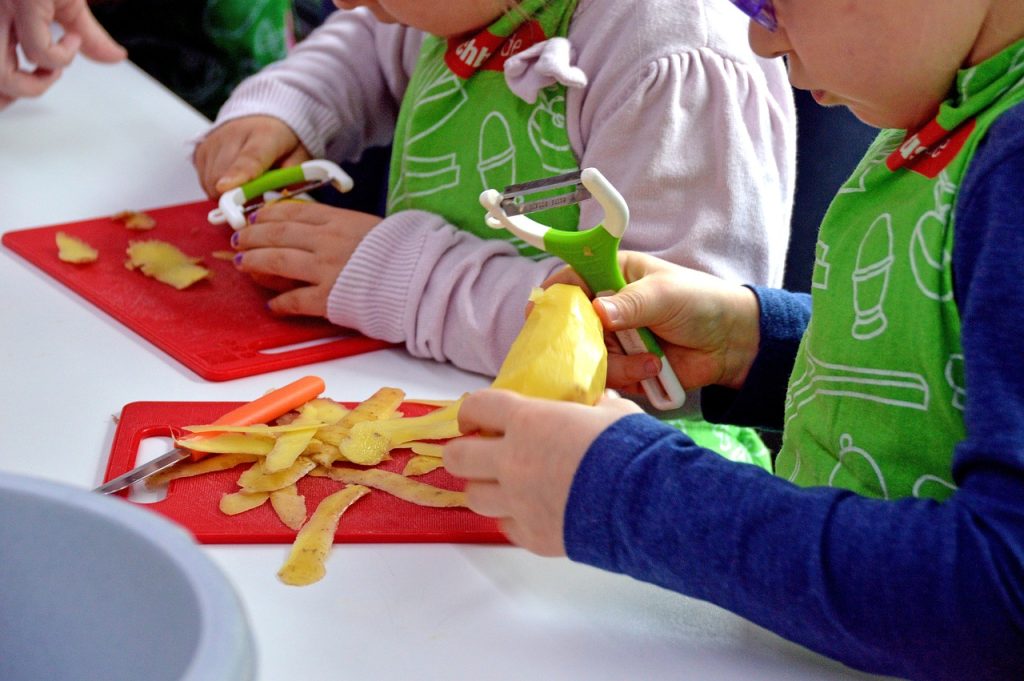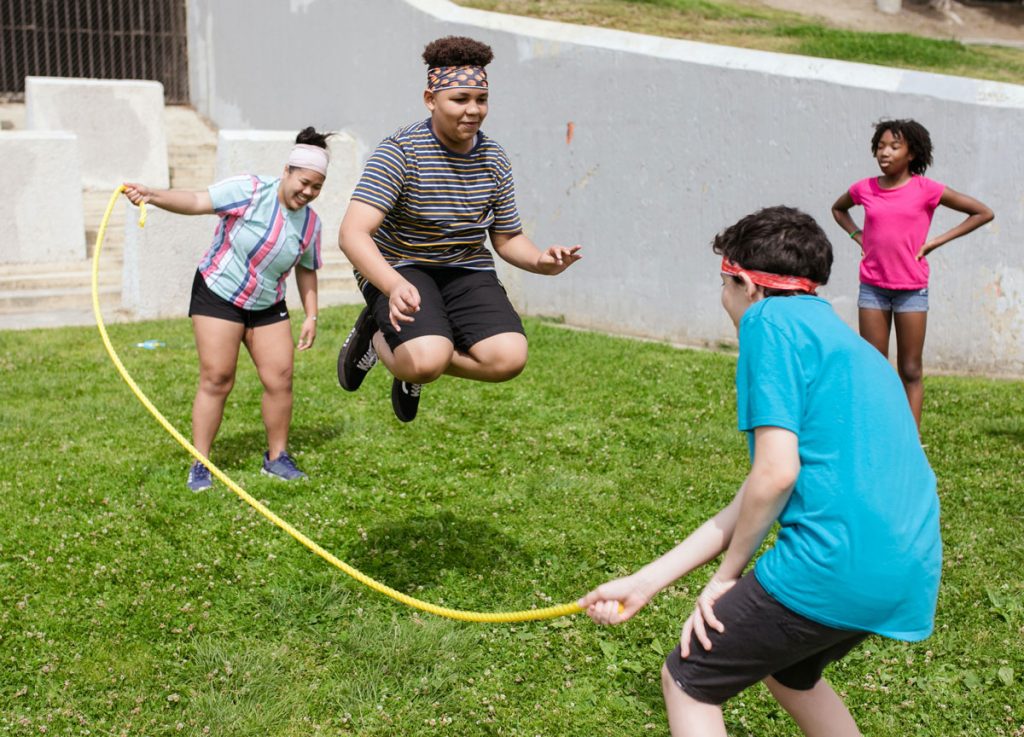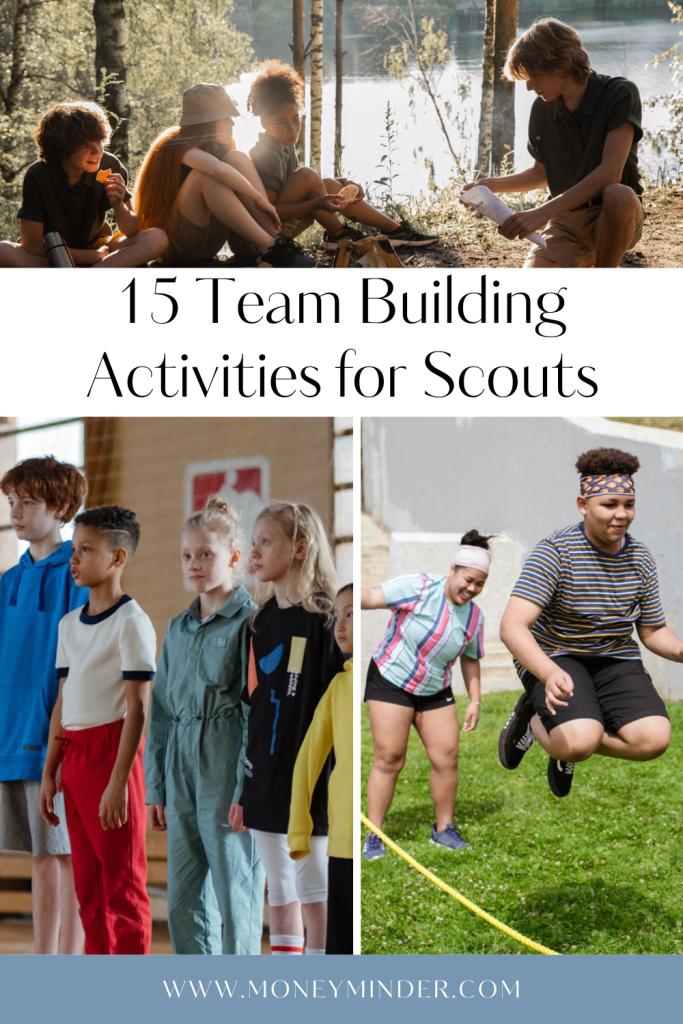As kids grow up, they will start to realize the importance of working with others. From school projects to sports teams, the ability to work collaboratively can make a big difference in a person’s success.
Teamwork is a valuable life skill that can help kids become better problem solvers, communicators, and leaders. Nobody understands this better than Scouting Organizations. They provide a fun and educational environment where kids and young adults can learn important life skills.
In fact, teamwork is a critical component of scouting organizations, and many of the activities and projects require members to work together. The Boy Scouts of America website provides a list of great team building activities that include a variety of indoor and outdoor options.
Here, we’ll give you some additional ideas for Scout teamwork activities. In addition to life skills, working in teams can also help members to develop strong friendships and a sense of camaraderie that can last a lifetime. So be sure to incorporate a “team” mentality at your next Scouting event!
15 Scout Activities That Foster Teamwork
Confidence Booster: Positive Plates
Tape a plain paper plate to each participant’s back. Arm each person with a pen or marker and set them free to write on one another’s backs with a message about something they like about that person. Keep it positive and encourage them to write something new for each person. In the end, have them read the nice things that were said about them aloud.
Engineering Feat: Marshmallow Build

It’s pretty simple: build a tower out of marshmallows and toothpicks. Each participant gets a set number of marshmallows and toothpicks that only they can touch. The team can discuss strategy and draft up blueprints before they start building, but each participant must place his or her own mallows to create a building that stands without falling over.
Fun and Physical: Relay Races
A good old fashioned relay race requires teams to work together to complete a set of tasks, such as running, jumping or passing a baton. One idea is to have each of the members design one leg of the relay to keep it interesting and specific to the environment in which you are playing.
Cooperation: Puzzle Challenge
Grab two puzzles with the same number of pieces (300, 500 or 1000 depending on ages and time allotment). Divide the group into two teams and set them to work to see who can finish or get the furthest on the puzzle within a given timeframe.
Let’s Eat: Cooking Challenge

Rather than having the same boring pizza party, share a snack or meal that the group has made themselves. Divide the group into teams and provide specific ingredients with which they must prepare a meal within the given timeframe.
Field Trip: Escape Rooms
This is a popular outing that typically costs a little money for entry. Teamwork and problem-solving skills must be used to escape from a locked room by solving puzzles and answering clues.
High Touch Classic: Human Knot
If your group is comfortable with a high touch activity, the classic human knot game is a great one. Have the group stand in a circle and have each person hold hands with two people across from them. The team must then work together to untangle themselves into a circle without letting go of each other’s hand.
Engineering Skills: Paper Airplane Challenge
Divide the group into small teams and give them sheets of paper and 15 minutes. Let them design and test out several different paper airplanes before choosing one best flyer to participate in the challenge. The paper airplane that flies the farthest wins.
Quiet Activity: Silent Lineup

Give the Scouts a trait on which to line up in order, such as shirt color or shoe size. The key is that they have to line up in an orderly pattern (like smallest to biggest shoe size) without saying a word. Pro tip: for younger kids, ask them to put a pretend marshmallow in their mouth to keep them quiet.
Warm Weather Classic: Water Balloon Toss
Everything is more fun when you get wet! For this team challenge, fill up lots of balloons (parents rejoice: they have some fun new devices to do a lot of water balloons at once). Divide the teams on two sides and have each player toss the balloon across to a member of the other side. Each time it is caught without breaking, they take a big step back. See who is the last water balloon (and team) standing!
Good for Younger Kids: Paper Bag Skits
Grab some regular brown lunch bags and put lots of different props in them. Hats, markers, accessories, a microphone, food, flowers — the more random, the better! Instruct the kids to write and put on a skit that incorporates all of the props and all of the people.
Physical Physics Lesson: Human Pyramid
Find a grassy outdoor area and ask the participants to figure out the best way to form a human pyramid safely within a given timeframe. This works best in small groups of around six people. Hint: ask them to think about size and weight when deciding who goes on bottom versus on top.
Musical Number: Jam Session

Grab all of the musical instruments the group has access to: harmonicas, drums, guitars, shakers, pianos and more. If none of the group members knows how to play an instrument, keep it basic with kazoos and shakers. Task the team to create a harmonious sound by playing an existing or original tune.
Belly Laugher: Blindfolded Pictionary
Pictionary is fun, but it can be even better when the illustrators are blindfolded! Think of group-specific clues in advance (like places your troop has been or inside jokes) and place them in a hat. Take turns choosing a clue to draw blindfolded. It makes for a fun and funny added challenge and the group must work together to discuss what they think is happening when Fido’s tail is drawn on his nose!
New Heights: Jump Rope Challenge

Grab an extra long jump rope and at least 5 people for this challenge. Two people will hold the rope as a person starts jumping. Slowly add one, two or even three people under the rope to see how many can all jump together.
What are you waiting for? Fostering teamwork for Scouts is one of the best things you can do to set them up for success in life. Scouts already provide today’s youth with excellent opportunities in many areas. Although they require a little planning, participating in teamwork activities like the ones above is an excellent way to develop important skills that will last a lifetime.


 Connect your Venmo account to MoneyMinder PRO to directly download transactions, saving you time and effort. You just review the transactions to ensure they are properly categorized and fill out any required fields.
Connect your Venmo account to MoneyMinder PRO to directly download transactions, saving you time and effort. You just review the transactions to ensure they are properly categorized and fill out any required fields. Connect your Bank, Paypal and Square accounts to MoneyMinder PRO to directly download transactions, saving you time and effort. You just review the transactions to ensure they are properly categorized and fill out any required fields.
Connect your Bank, Paypal and Square accounts to MoneyMinder PRO to directly download transactions, saving you time and effort. You just review the transactions to ensure they are properly categorized and fill out any required fields. Connect your Bank, Paypal and Square accounts to MoneyMinder PRO to directly download transactions, saving you time and effort. You just review the transactions to ensure they are properly categorized and fill out any required fields.
Connect your Bank, Paypal and Square accounts to MoneyMinder PRO to directly download transactions, saving you time and effort. You just review the transactions to ensure they are properly categorized and fill out any required fields. Join It is a membership management service that helps businesses and nonprofits effectively sell, track, and grow their membership.
Join It is a membership management service that helps businesses and nonprofits effectively sell, track, and grow their membership. Connect your Bank, Square and PayPal accounts to MoneyMinder PRO to directly download transactions, saving you time and effort. You just review the transactions to ensure they are properly categorized and fill out any required fields.
Connect your Bank, Square and PayPal accounts to MoneyMinder PRO to directly download transactions, saving you time and effort. You just review the transactions to ensure they are properly categorized and fill out any required fields.